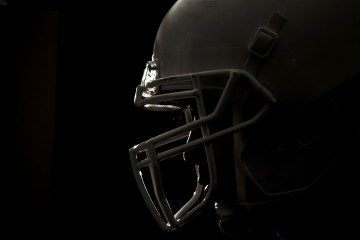Traumatic Brain Injury – The Impact Of Football-Related Concussions
Tuesday, December 05, 2017

This means that professional athletes who play in the NFL are at greater risk because they’re more susceptible to concussions and other brain-related injuries. Today’s NFL is nothing like it was two decades ago. In other words, today’s players, like Eddie Lacy, are bigger, stronger, faster, and in better shape than ever before. They have bodies of steel, and every muscle in their body has been fine-tuned for maximum performance by coaches and training staff members. But no matter how many hours athletics spend training on the football field, there are some parts of the body that will never be able to withstand constant twist (joints), collisions (bones), and hits above the neck (brain).
Within the past year, the NFL has finally acknowledged for the first time the link between football and CTE after denying it for years. Now they are getting hit with countless lawsuits from former players who filed for personal injury lawsuit and compensation claims.
So what happens now if a player sustains a brain injury that could be career-ending or life-threatening?
Before diving into the concussion protocol methods, it’s important to address the myth circulating around the NFL when it comes to concussions. A common belief for many years now has been after a player sustains a hit to the head, the brain will bounce around the skull for a few seconds, leaving bruises only on the outer surface – or gray matter – thanks to the protective gear athletes wear.
According to Ohio University, scientists and researchers have teamed up to prove this theory wrong. Yes, there is some movement within the skull, but the real damage, however, occurs deep within the brain – in the white matter. To put it in a different perspective, think of someone shaking Jell-O around in a bowl. When Jell-O is shaken repeatedly, for instance, it stretches apart. This is essentially what happens to the brain after taking a blow to the head – the wires that connect your brain to your body are left damaged.
After a player suffers a concussion, they must go through what’s called a “concussion protocol,” which involves a series of test and sideline evaluations – developed by the league’s head, neck and spine committee – to help determine if they’re able to continue playing. Since every head injury is different, each player must be treated individually. In most cases, however, the player either doesn’t know they’ve suffered a concussion or simply doesn’t report it to officials, which doesn’t help in the long run.
If a player does show signs of concussion symptoms and fails to pass the protocol exam, they will be removed from the game and evaluated by training officials in the locker room. If that same player continues to experience concussions, or takes a serious blow to the head – like Ricardo Lockette – throughout the season, they will be forced to retire from the NFL to prevent further damage to the brain.
Whether or not this will work, only time will tell. But concussion rehabilitation is the next frontier when it comes to learning how to treat these types of injuries among football players. In order for this method to work, however, medical officials need to have a better understanding of who can benefit from this treatment, and when it should be started. In addition to playing hard for big contracts, NFL players, as well as youth players, need to take into account their future playing career. It’s scary if you think about it, but it’s something that needs to be addressed.
Education is key for concussion prevention. That’s why wearing your protective gear and knowing how to use it is vital. Concussions in football are something that can’t be prevented, but taking steps towards being safer on the field can limit the number of head injuries players sustain.
Related Articles
- Beaverton-area High School Football Concussions Nearly Double National Average
- Police Investigating Possible Drug Overdose Death of Portland State Football Player
- Preview: National Signing Day for College Football
- Pac-12 Football: Then, Since, & Later
- Oregon’s Football Uniforms No Longer a Joke
- Oregon Ducks Lose NCAA Football Championship 42-20
- Oregon Football to Start Grad Transfer Prukop at QB
- Rediscovering the Joy of Mediocre College Football
- Reliving My Insane Predictions for the 2015 College Football Season
- What Will Happen to Portland State’s Football Team?
- Why Football - All Sports- Should Not be Compared to “War”
- The Views from a New Oregonian: The Importance of Oregon Football
- Thanksgiving Day and Football: Traditions That Will Never Die
- Six Oregon Football Players To Watch as 2014 Season Kicks Off
- Sydney Seau Speaks Up About the Dangers of Football
- Oregon Ducks Have Re-Joined College Football’s Mortal Majority with Conference Title as Newest Goal
- Oregon Ducks Football Finds New Face in Royce Freeman
- College Football Bowl Predictions 2015
- Ducks Football at a Crossroad Following Alamo Bowl Debacle
- Arena Football Re-Launches This Week – And You Can Get In Free




 Delivered Free Every
Delivered Free Every
Follow us on Pinterest Google + Facebook Twitter See It Read It